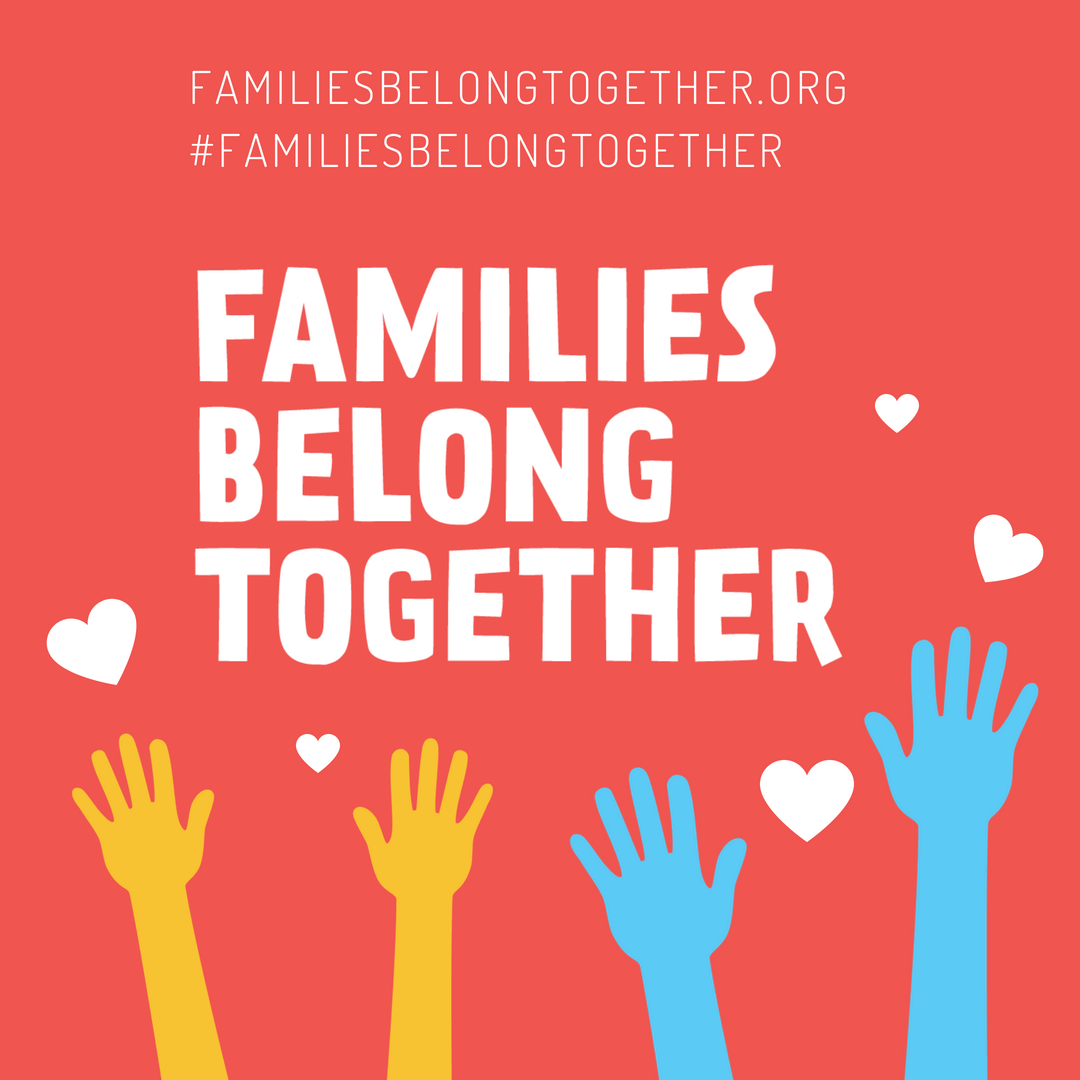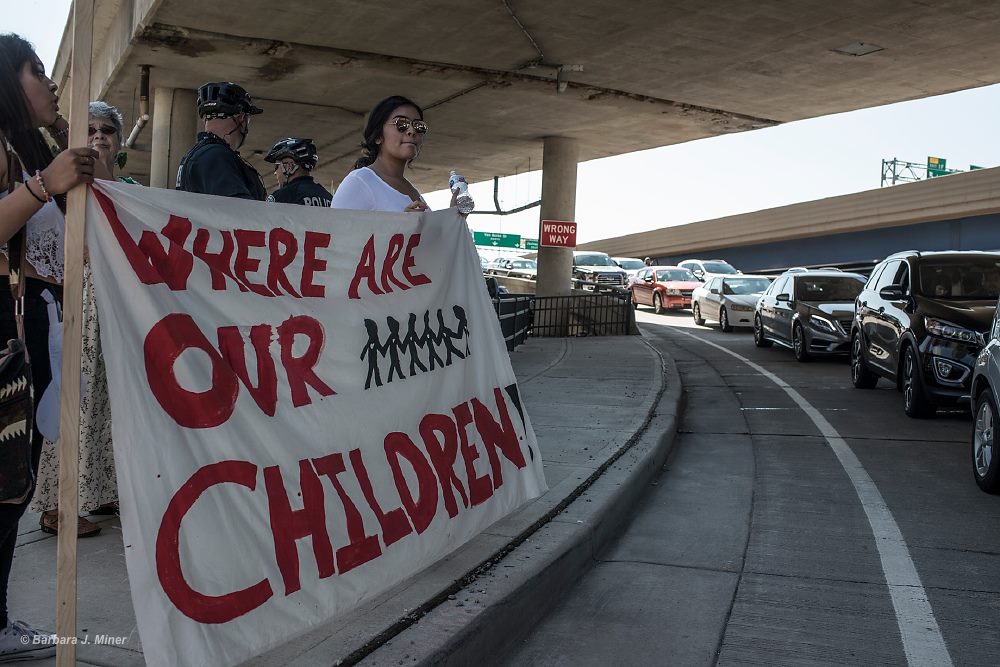By the editors of Rethinking Schools
Kina, the 6-year-old daughter of one of our editors, walked into the living room when the TV was on last week and saw a visual of children huddled under mylar blankets. “What are those kids doing in there?” she asked. “Are they in jail?”
Our editor, her mom, explained that the kids had been separated from their parents, and that their parents were probably in a different jail.
“Aren’t grown-ups supposed to keep kids safe?” she asked.
All of our children are asking themselves these questions right now, no matter how sheltered we think they might be from the past weeks’ horrific events. As educators, we are all responsible for thinking about how we’ll respond to Kina’s question. While we may not confront our students’ questions until the fall, we’re living this summer in a state of emergency.
Children — at least 2,342 — have been torn away from at least 2,206 parents since the Trump administration’s zero tolerance policy went into effect in early May. And, of course, these numbers might be much larger, as the Trump administration has shown that it doesn’t care about tracking children and their parents. These children are living in child prisons, and their families have no way to find them or learn of the conditions under which they are being held. Kids have been taken across state borders to at least 100 shelters in 17 states, some operated by private contractors who benefit financially from this manufactured crisis, a brazen display of cruelty.

Video footage shows children ripped away from their parents, moms and children crying out for each other. Children are being housed in makeshift tent cities and repurposed Walmarts (where it is reported that each morning they are required to stand and recite the Pledge of Allegiance in English). There are reports of at least three so-called “Tender Age” facilities for the youngest victims, some of whom are babies. Scholars, activists, and journalists who have visited these detention centers report children being denied the most basic care and attention — guards who are prohibited from holding or comforting crying babies, siblings who are not allowed to hug each other. Pediatricians and psychiatrists say these separations are causing irreparable harm to the fragile health of children. Crossing the militarized U.S. border is itself an incredible ordeal; being denied access to the comfort and protection of a parent or trusted adult in the midst of such upheaval is a prescription for long-term psychological and physical trauma.
According to the Washington Post, the Trump administration claims that parents who want to locate their children are given a flier with a toll-free number for the Office of Refugee Resettlement. But families and their lawyers say that some have received no flier, and others that their calls have gone unanswered — leaving families with terrifyingly little information about their children’s whereabouts. One lawyer said, “You wait and wait for no information.”
The separated children and families are not the only ones denied critical information. As educators and parents, we are trying to piece this horrible puzzle together so that we can act.
We at Rethinking Schools are heartened by the resistance that we have witnessed over these last days and weeks, from the occupation of ICE centers to the cadres of lawyers, journalists, and interpreters advocating for affected families; from viral social media fundraisers to whistleblower workers in detention centers sharing their stories. We support the nationwide protests on June 30th being coordinated by FamiliesBelongTogether.

Scores of protesters gathered near the Pfister Hotel where Trump was attending a fundraiser. The protest was organized by Voces de la Frontera and centered on Trump’s anti-immigration policies. Credit: Barbara J. Miner
The massive civic revulsion over Trump’s policy of state-sponsored kidnapping — like the airport protests over the Muslim ban and the outrage over Charlottesville — is another defining moment in the struggle against ascendant racism and reaction. The Supreme Court’s shameful decision upholding Trump’s Muslim ban is a reminder that it will take more than outrage to turn back this tide of hate. While we urgently want to see Republicans crushed in the fall elections, ultimately only sustained mobilization of democratic social movements can prevent the rise of a new American fascism.
It was such activism that made it impossible for the Trump administration to continue the family separation policy in its original form. However, President Trump’s executive order to end family separations is not a retreat from his administration’s assault on migrants, asylum seekers, children, and their parents. It merely paves the way for long-term incarceration of families. Now is the time to fight more, not less.
As teachers, we need to do two things this summer: act now and plan for our students’ return in the fall. Right now, we can provide financial support to key organizations, participate in marches, call our representatives, and organize in our neighborhoods and communities. We can use our networks to amplify the calls to reunify families, demilitarize the border, and abolish ICE. We can relentlessly resist the classification of these families as criminals, and speak to our families, friends, and communities about the obligation to provide safe asylum for people who are fleeing unsafe, unfair, and unstable conditions — conditions created, at least in part, by U.S. imperialist policies.
And, we need to begin strategizing how we will show up for our students — all students — in our classrooms and schools come fall. Students will want and need to talk about these horrors, and they will look to us for protection and spaces to heal. Our students deserve a curriculum that’s rich in both historical context and resistance. This moment, while horrifyingly urgent, is not unique in the history of U.S. white supremacy — enslaved children sold away from their parents, Native American families removed from their homelands at bayonet-point, Mexicans deprived of their land and rights following the 1846–48 U.S. war against Mexico, Native American children forced into repressive boarding schools, Mexican Americans uprooted and deported during the Great Depression, Japanese American families incarcerated during World War II. We want to surface the inspiring ways in which people have fought for themselves and each other — the myriad ways enslaved people freed themselves, Indigenous children kept their languages and identities alive, Japanese Americans challenged the daily indignities of their incarceration as well as the constitutionality of their treatment. We also want to bring contemporary voices of resistance into our classroom — individuals and groups who are drawing on their historical experiences to decry the present injustices. These examples of activists — past and present — can inspire our students to see themselves as change agents in solidarity with larger movements across generations.
When students like Kina ask us if we can keep them safe, our actions must be our answer. If we refuse to talk about these issues — because they are too painful, too complicated, too sensitive, or too politically fraught — that sends a clear message that we have relinquished our responsibilities, as adults, to try to keep them safe. Our silence is complicity. Now is the time for action and solidarity.
We call on educators, students, and families to help us emphatically answer Kina’s question: We will do everything in our power to protect you. We will do everything in our power to keep you safe.
Rethinking Schools is a quarterly magazine focusing on social justice education. You can subscribe at www.rethinkingschools.org.
Photo credits (featured top and bottom photo): Barbara J. Miner. You can see more of Miner’s work at https://barbarajminer.com.
